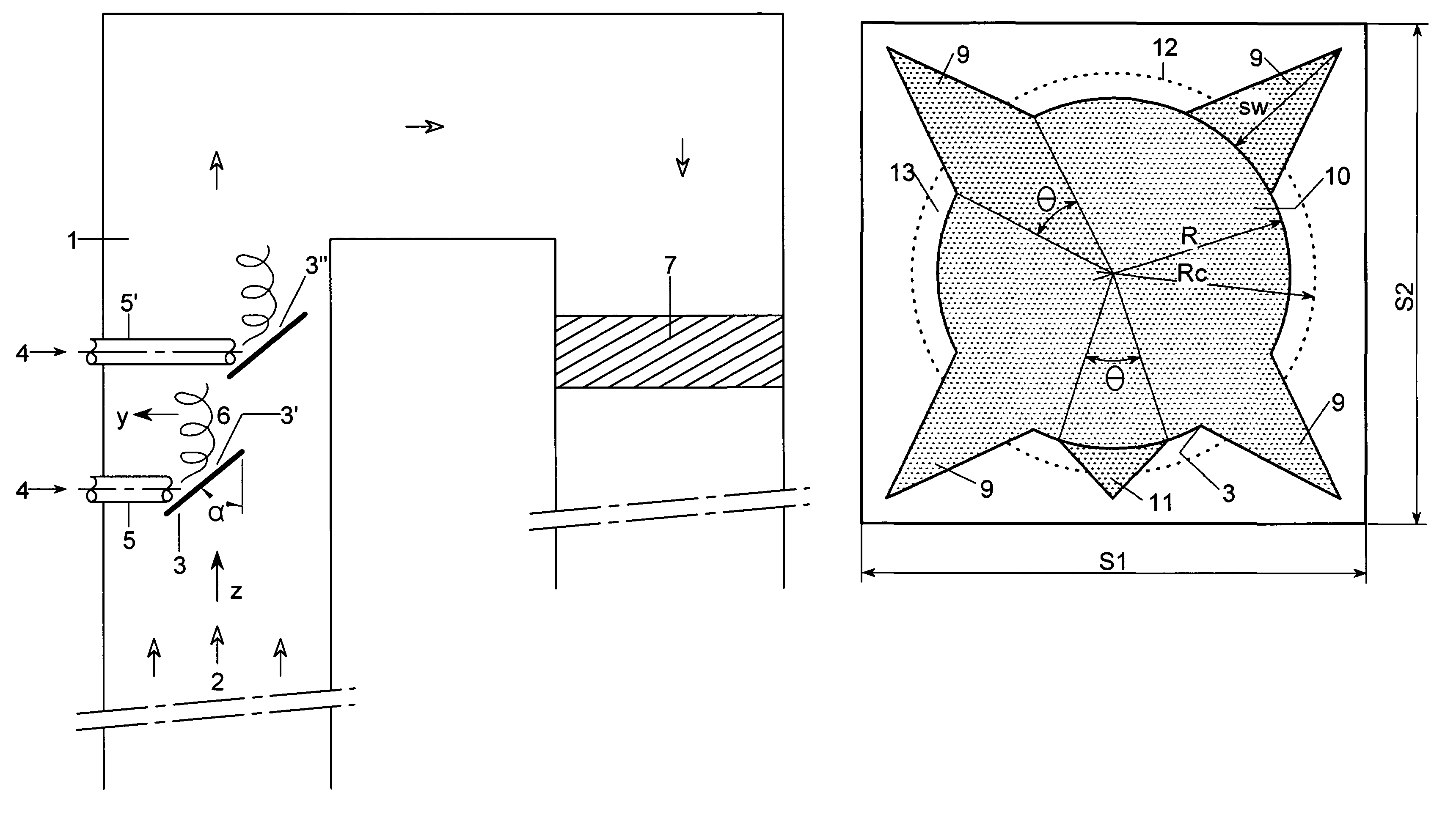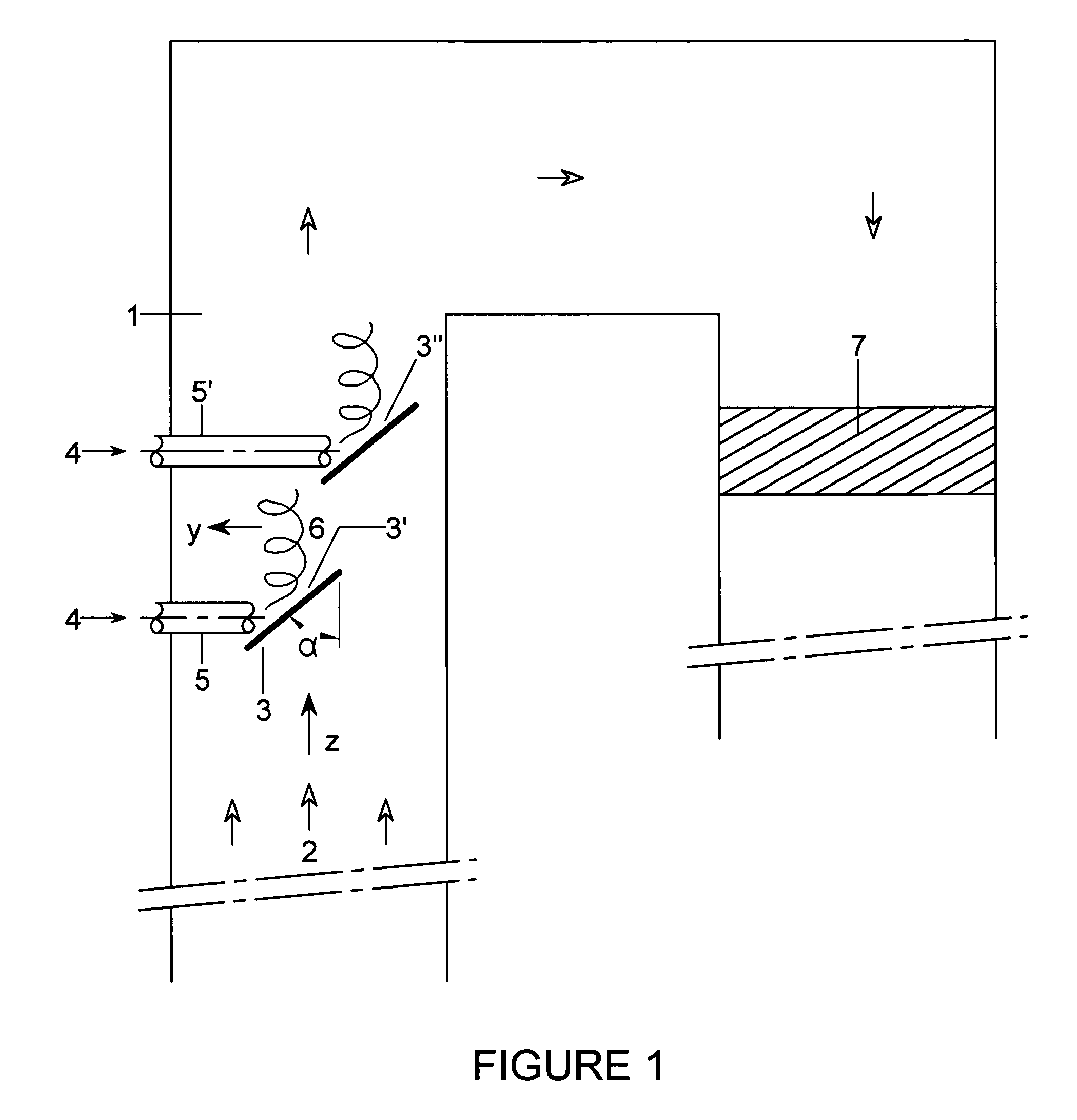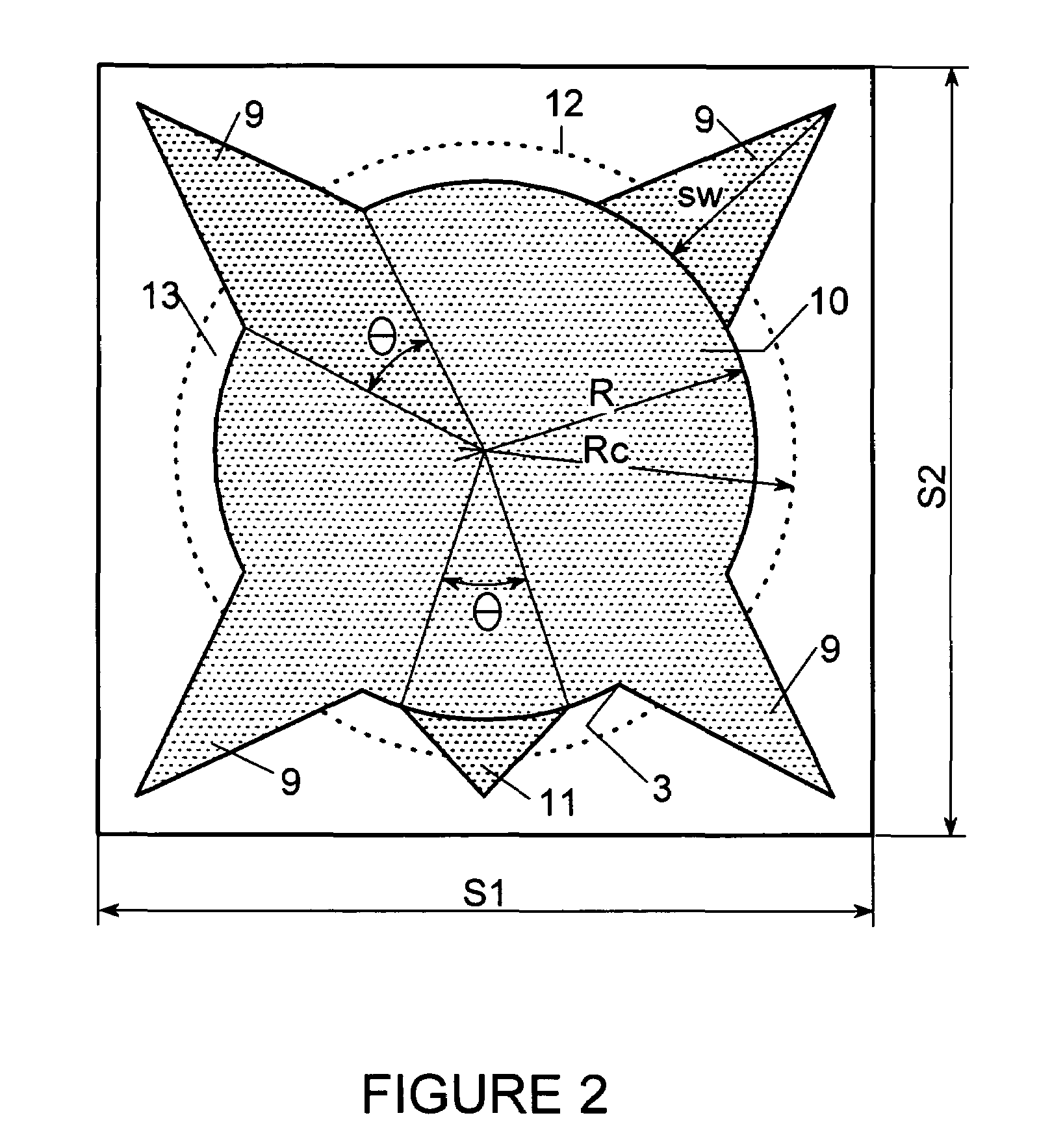Method for mixing fluid streams
a technology of fluid streams and mixing methods, applied in the direction of mixing, mechanical equipment, transportation and packaging, etc., can solve the problems of increasing the distance in a duct to achieve the same degree of mixing, increasing the distance in a duct, and increasing the degree of mixing or mixing efficiency. , to achieve the effect of improving the degree of mixing or mixing efficiency
- Summary
- Abstract
- Description
- Claims
- Application Information
AI Technical Summary
Benefits of technology
Problems solved by technology
Method used
Image
Examples
Embodiment Construction
[0048]The invention is illustrated in the accompanying drawings, wherein
[0049]FIG. 1 shows a schematic vertical cross-sectional view of a flue gas section according to the invention.
[0050]FIG. 2 shows a cross-sectional view of a mixer according to the invention positioned within a square duct.
[0051]FIG. 3 shows a graph describing degree of mixing as a function of pressure loss for a mixing device according to the invention with respect to a conventional circular mixing device.
[0052]In FIG. 1 the flue gas section for reduction of nitrogen oxides comprises a duct 1 having rectangular section through which a flue gas 2 passes. The flue gas represents a first major fluid stream travelling in direction Z and collides with the front side of mixing device 3, which is disposed substantially transversally to the travelling direction of said first major fluid stream. Mixer 3 is positioned at incidence angle α with respect to the travelling direction of the major fluid stream 2. A second fluid...
PUM
 Login to View More
Login to View More Abstract
Description
Claims
Application Information
 Login to View More
Login to View More - R&D
- Intellectual Property
- Life Sciences
- Materials
- Tech Scout
- Unparalleled Data Quality
- Higher Quality Content
- 60% Fewer Hallucinations
Browse by: Latest US Patents, China's latest patents, Technical Efficacy Thesaurus, Application Domain, Technology Topic, Popular Technical Reports.
© 2025 PatSnap. All rights reserved.Legal|Privacy policy|Modern Slavery Act Transparency Statement|Sitemap|About US| Contact US: help@patsnap.com



